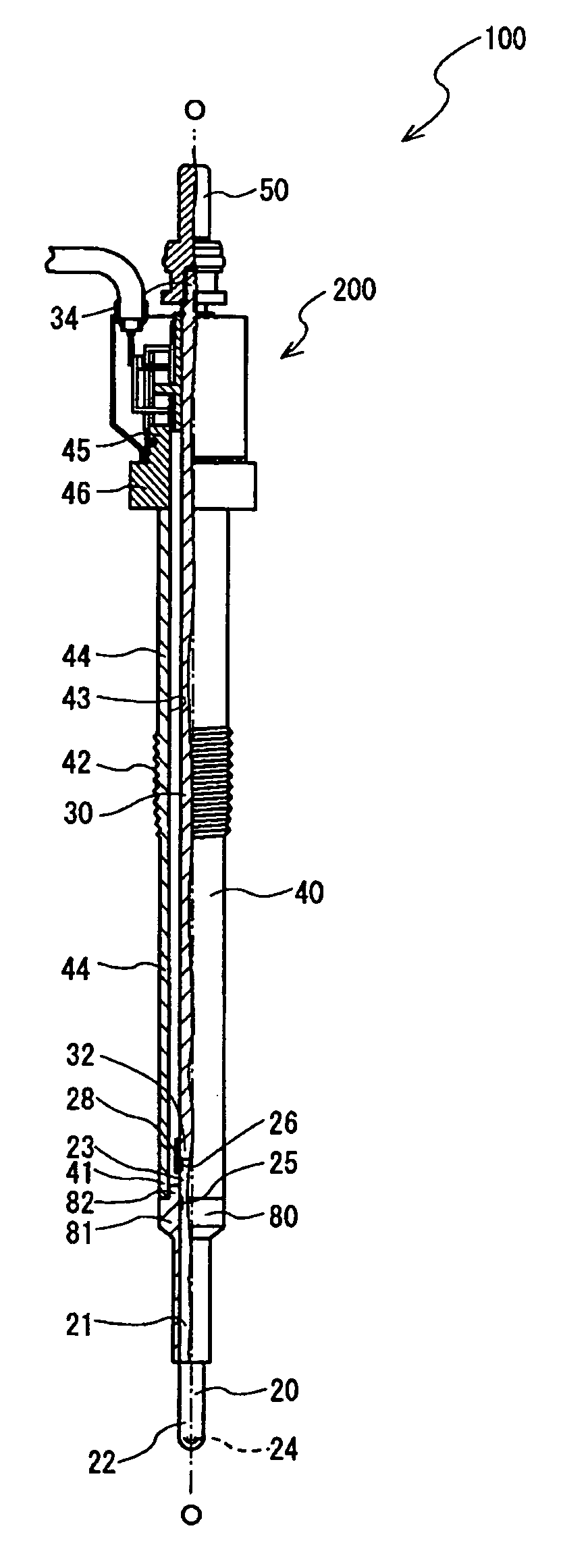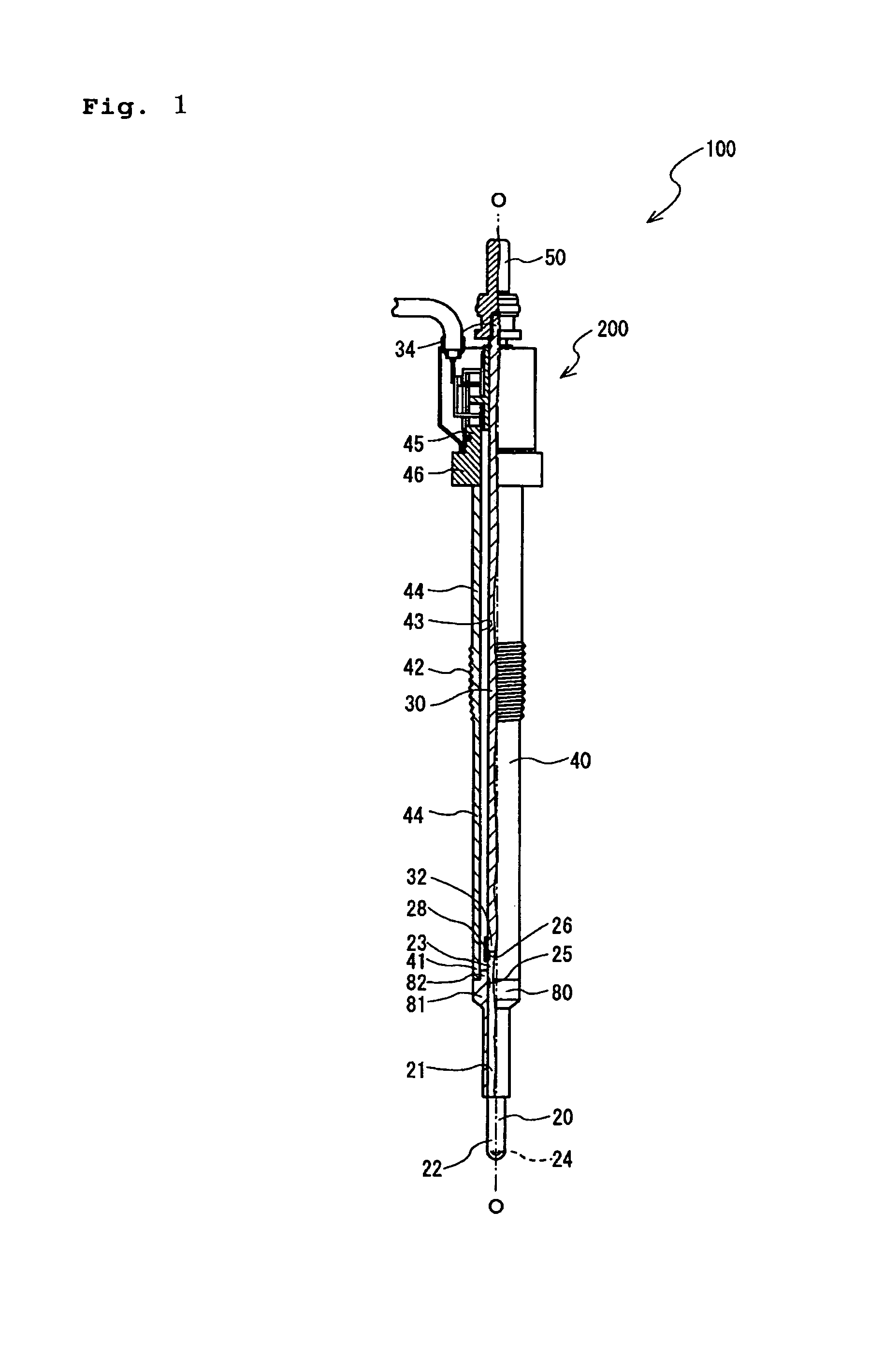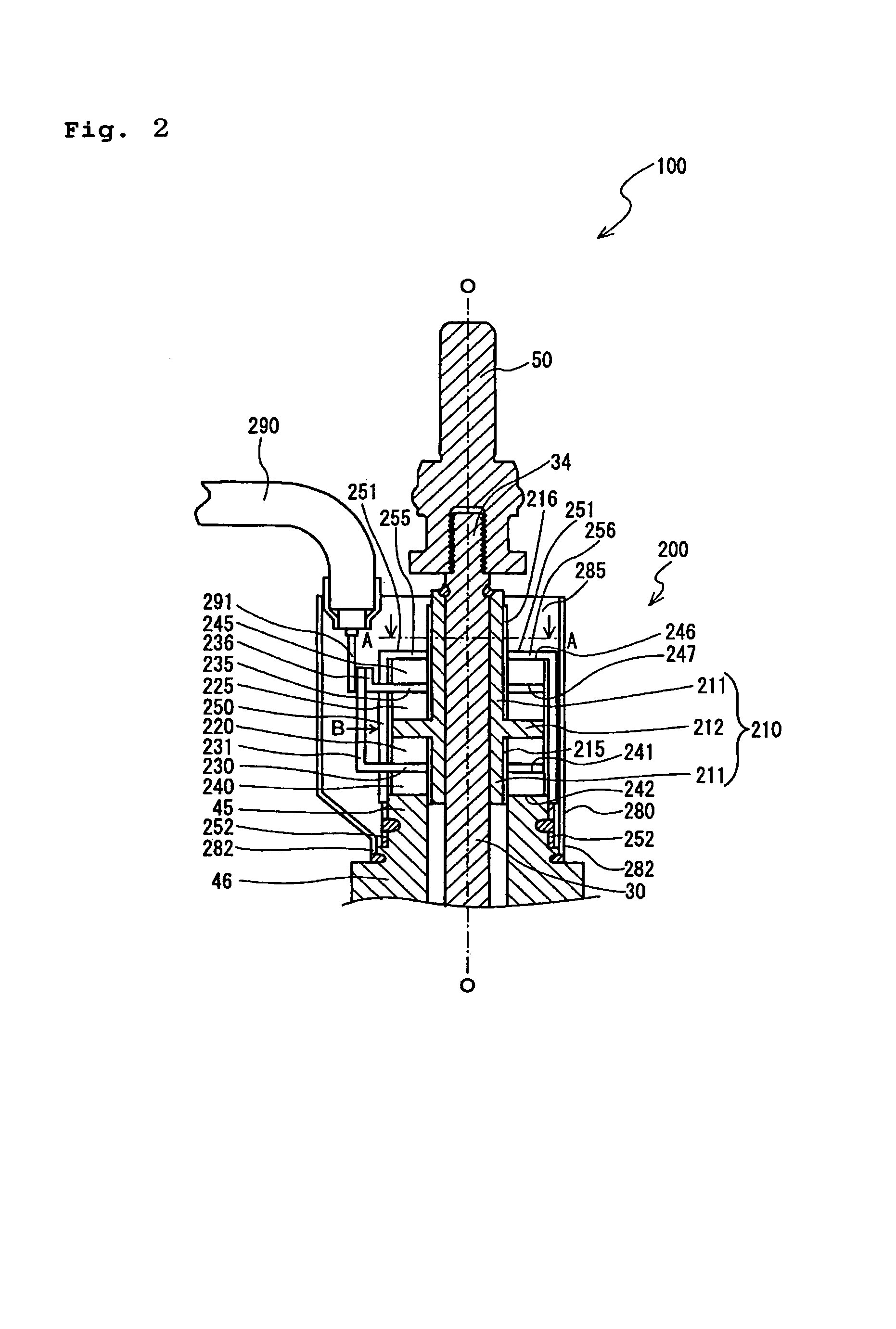Combustion pressure sensor and glow plug including the same
a technology of combustion pressure sensor and glow plug, which is applied in the direction of instruments, lighting and heating apparatus, machines/engines, etc., can solve the problems of non-uniform pre-load on the inner wall of the case to the piezoelectric element, and the noise produced by the top end-facing end surface of the inner wall of the case, so as to reduce the generation of the noise caused by the rocking, reduce the size of the internal combustion engine, and improve the sensitivity
- Summary
- Abstract
- Description
- Claims
- Application Information
AI Technical Summary
Benefits of technology
Problems solved by technology
Method used
Image
Examples
example 1
[0065]In order to confirm the effect described above, aglow plug 100 was assembled on to an internal combustion engine (not shown), and an output from a combustion pressure sensor 200 was checked. First of all, a glow plug (sample 1) including a case 250 formed with a slit 255, but not a slit 256 which has conventionally been employed, and a glow plug 100 (sample 2) of this embodiment, as heretofore described, were prepared. Then, the combustion pressure of the internal combustion engine that was used for testing was measured by use respectively of sample 1 and sample 2. At this time, the measurement was conducted in a state where the magnitude of the combustion pressure was adjusted by use of a reference pressure sensor (model 6052A, manufactured by KISTLER) so as to be identical in a case where an evaluation test for the sample 1 was conducted and a case where an evaluation test for the sample 2 was conducted.
[0066]More specifically, an output (an output that makes the signal wire...
PUM
 Login to View More
Login to View More Abstract
Description
Claims
Application Information
 Login to View More
Login to View More - R&D
- Intellectual Property
- Life Sciences
- Materials
- Tech Scout
- Unparalleled Data Quality
- Higher Quality Content
- 60% Fewer Hallucinations
Browse by: Latest US Patents, China's latest patents, Technical Efficacy Thesaurus, Application Domain, Technology Topic, Popular Technical Reports.
© 2025 PatSnap. All rights reserved.Legal|Privacy policy|Modern Slavery Act Transparency Statement|Sitemap|About US| Contact US: help@patsnap.com



